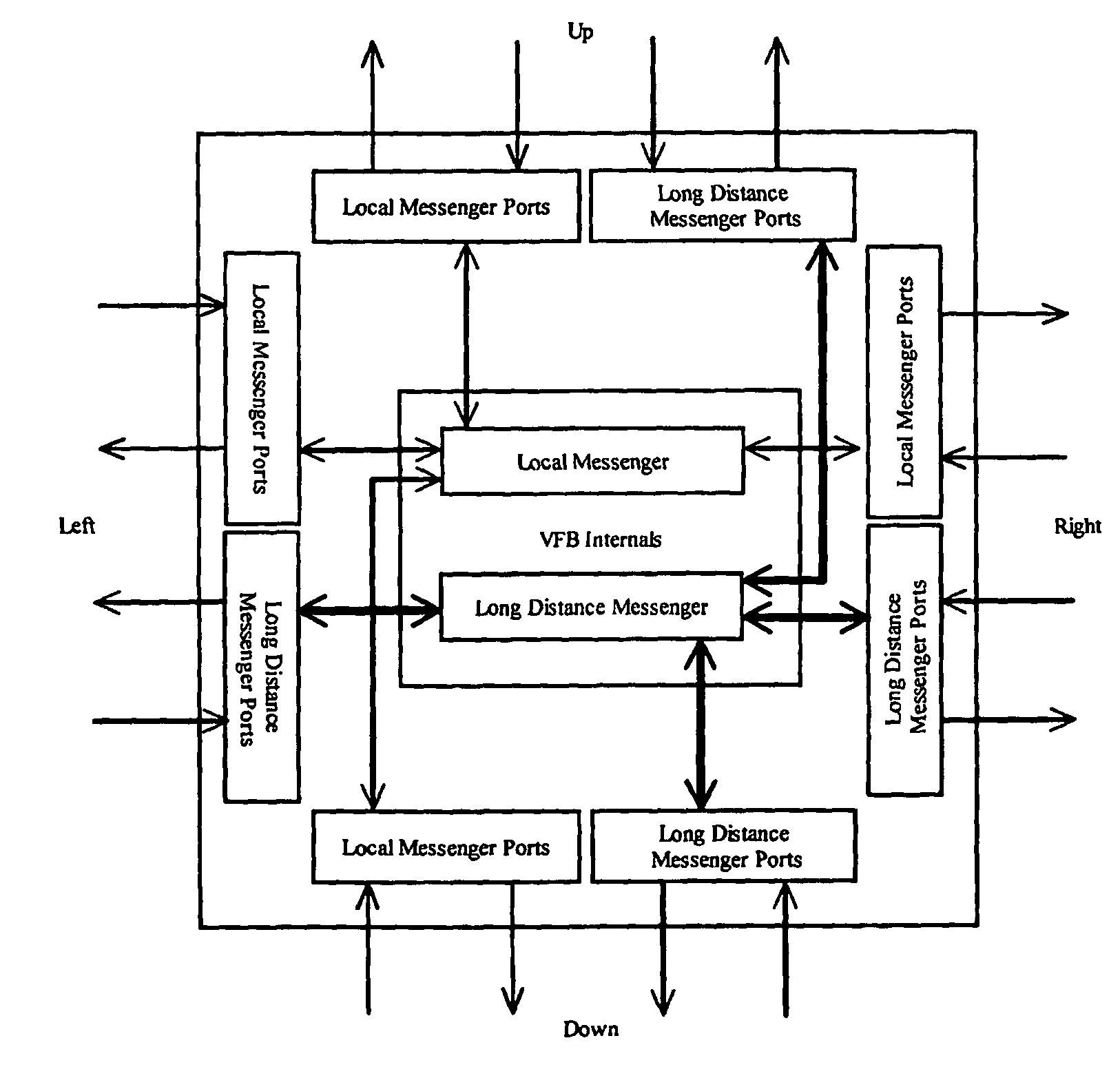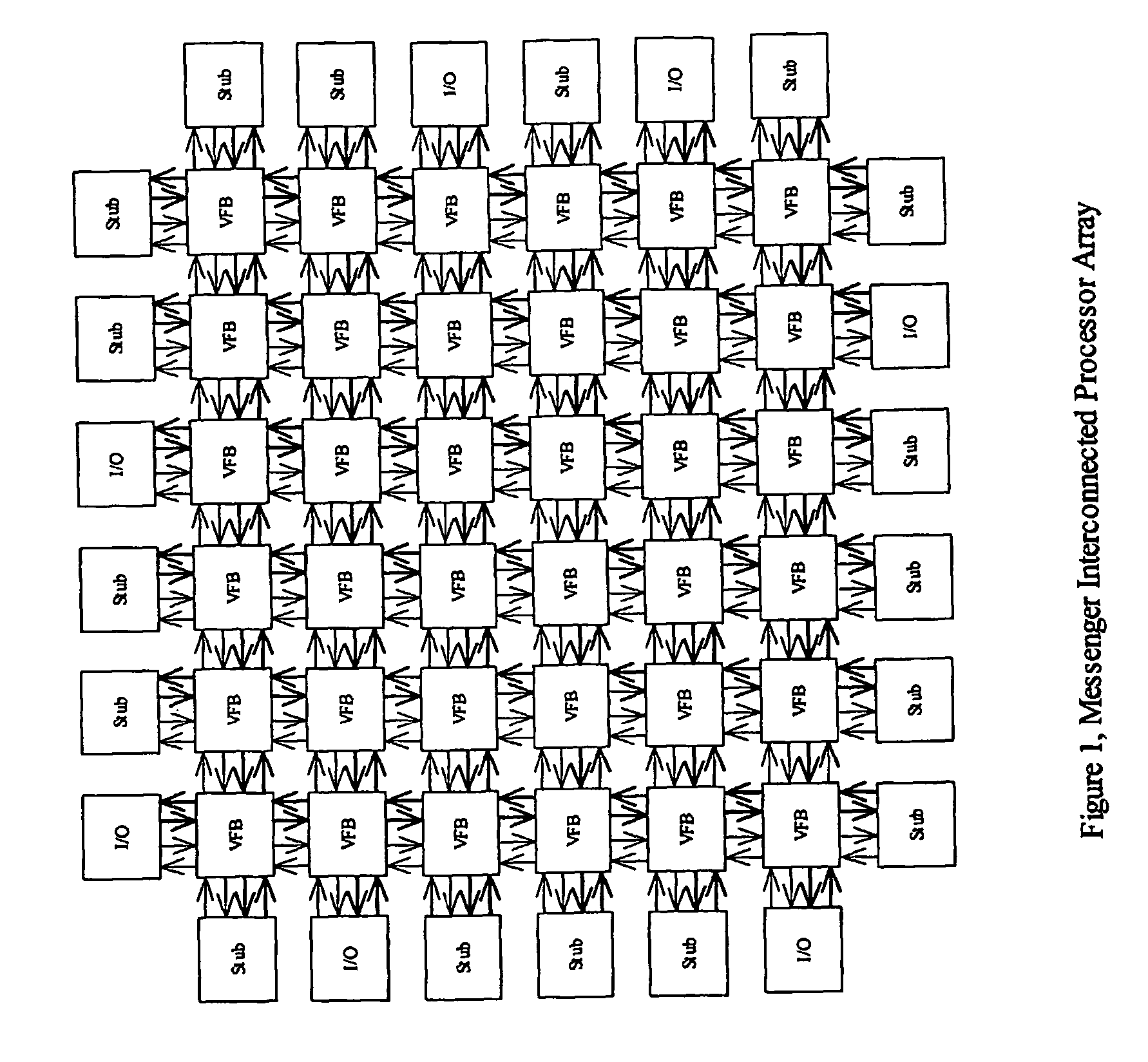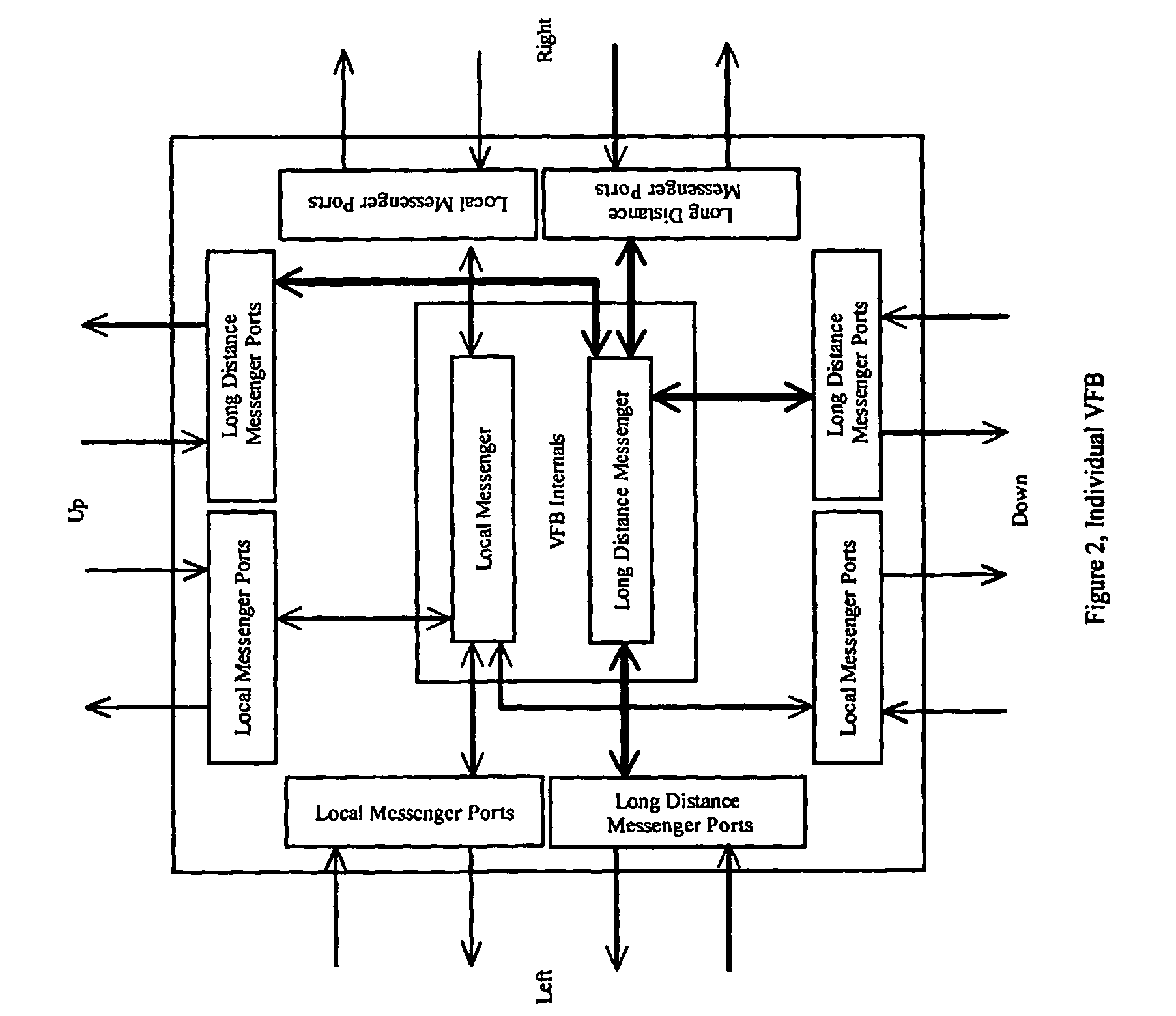System and method for message passing fabric in a modular processor architecture
a message and fabric technology, applied in the field of message based interconnection system and method, can solve the problems of not being able to be dynamically changed, not being well-suited for a semiconductor architecture, and not being able to adapt and dynamically optimize for a range of tasks
- Summary
- Abstract
- Description
- Claims
- Application Information
AI Technical Summary
Benefits of technology
Problems solved by technology
Method used
Image
Examples
Embodiment Construction
[0030] Throughout the figures provided, numbering is preserved such that a reference number appearing in more than one figure refers to the same object. Arrows within the figures refer to the primary direction of the flow of control and data and should not be construed as the sole direction of data flow.
[0031] Referring now to the Figures, various preferred embodiments of the present invention are shown. Generally, as illustrated in FIG. 1, the modular processor architecture of the present invention comprises at least one processing element. More preferably the architecture comprises a plurality of processing and / or logic elements 101(also known as Virtual Function Blocks or VFBs, and hereinafter referred to as VFBs) configured to be interconnected according to a preferred message passing fabric system and method. In a plurality of preferred embodiments of the present invention, the processing and / or logic elements, VFBs (101) to be interconnected, are configured to interconnect wi...
PUM
 Login to View More
Login to View More Abstract
Description
Claims
Application Information
 Login to View More
Login to View More - R&D
- Intellectual Property
- Life Sciences
- Materials
- Tech Scout
- Unparalleled Data Quality
- Higher Quality Content
- 60% Fewer Hallucinations
Browse by: Latest US Patents, China's latest patents, Technical Efficacy Thesaurus, Application Domain, Technology Topic, Popular Technical Reports.
© 2025 PatSnap. All rights reserved.Legal|Privacy policy|Modern Slavery Act Transparency Statement|Sitemap|About US| Contact US: help@patsnap.com



